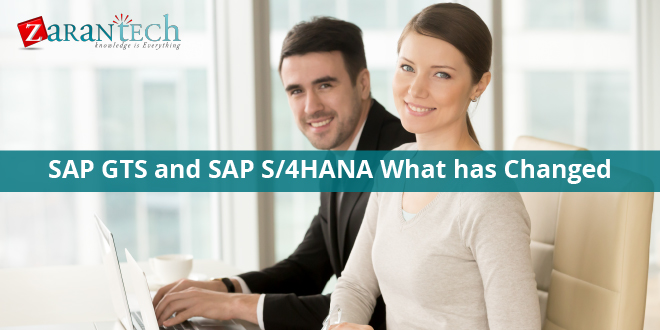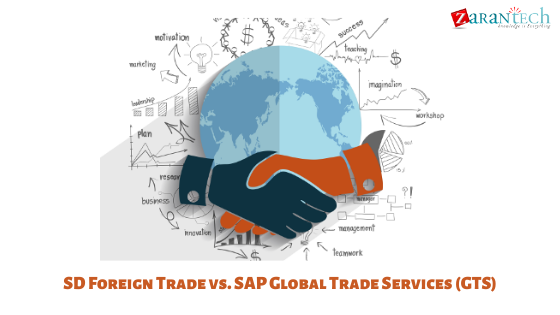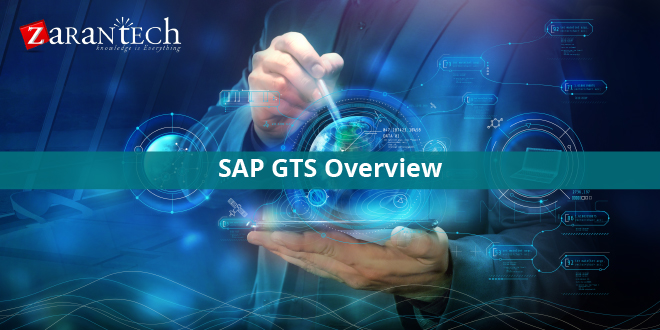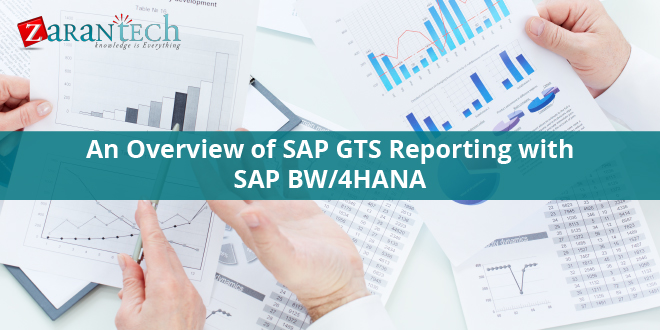SAP GTS Interview Questions
Category: SAP GTS Posted:Aug 05, 2020 By: Robert
If you’re seeking SAP GTS Interview Questions & Answers for experienced & freshers, you are at the right place. There are a lot of job opportunities from many reputed companies in the world. According to a research study, SAP GTS has a market share of 2.1%. So, you still have the chance to pursue your career in SAP GTS. Through this article, ZaranTech offers SAP GTS Interview Questions that help you in cracking your interview & get your dream job as SAP GTS Developer.
Q. What is SAP GTS?
GTS stands for Global Trade Services and is a standalone SAP application that replaces the existing foreign trade functionality in R/3 SAP. To conduct business in other countries, the company has to follow local regulations, fulfill documents requirements, and understand complex tariffs and duties. Failing to do so can be expensive and that’s where GTS comes handy. They ensure business abides by the compliances. SAP GTS is an ERP based solution meant for companies that are primarily into International Operation. Firms which have trading agreements with a large network of partners across the globe with operations in various countries are most likely to use this application.
In today’s global markets, outgoing shipments have to clear customs first. That suggests ensuring that products are appropriately classified and have complete and precise documents. Plus mandatory digital filing is difficult through the Automated Export System (AES) directly to UNITED STATE Traditions. Also, with the spread of worldwide terrorism, export procedures are subject to closer analysis than ever.
For a company with partners overseas, its necessary to make sure that they are taking care of the right people, countries, and right products. Businesses have to recognize their constraints on specific items, countries of destination, business partners, and there are a host of guidelines to adhere to– and extreme charges for disobedience. Furthermore, to endure in today’s very competitive global markets, Business can not afford to miss the possibilities offered by trade preference arrangements. They have to offer detailed certification of origin for their products to their abroad consumers.
GTS architecture how it interacts with Feeder System, all the master data like Product, customer-vendor, and all the transaction data like sales order shipment invoicing doc get pushed to GTS via RFC Phone Call. As well as any kind of message back to the Feeder system flows via RFC call.
Q. What are the key aspects of SAP GTS?
The major components of SAP Global Trade Services are as follows:
- Compliance Management
- Customs Management
- Risk Management
- Electronic Compliance Reporting (ECR)
What are the key benefits of employing SAP GTS?
The key benefits of using SAP GTS are as follows:
- Optimal usage of time due to automated processes
- Cost-effective solution
- The minimal manual workforce required
- Automated inspection of compliance violation and banned dealers
- Retaining the company brand and trust by avoiding the fines and penalties
Q. What is the relation between R/3 and SAP GTS?
SAP R/3 is the former name of the enterprise resource planning software created by SAP AG. It is an enterprise-wide information system developed to work with all the resources, information, and activities required to complete business procedures such as order fulfillment or payment. SAP R/3 was arranged to distinctive useful components, covering the typical features in position in a company. The most commonly used modules were Financial and Controlling (FICO), Human Resources (Human Resources), Material Management (MM), Sales & Distribution (SD), and Production Preparation (PP). Each module handles specific business task on its own but will be linked to one another whenever required. For example, an invoice from a billing transaction of Sales & Distribution would pass through to accounting, where it will certainly show up in accounts receivable and cost of goods sold.
SAP normally is focused on the best methods for driving its software processes, but more recently expanded into vertical markets. In these scenarios, SAP created specialized components (referred to as IS or Industry Specific) geared towards a specific market sector, such as utilities or retail.
The SAP-based architecture of R/3 on a three-tier client/server framework includes:
1. Presentation Layer (GUI).
2. Application Layer.
3. Data Layer.
SAP permits the IT-supported processing of a wide range of tasks, occurring in a typical firm or financial institution. SAP ERP is differing from R/3 mainly because it is based on SAP NetWeaver: core elements can be applied in ABAP and Java and new functional locations are mostly not created as part of the previous ERP system, with carefully interconnected constituents, however as self-contained elements or even systems.
Q. In R12 what are the PO types in Purchases and Invoices in AP?
There are mainly 4 types of PO’s which are as follows:
- Standard PO
- Blanket PO
- Contract PO
- Planned PO
Coming to the invoice there are different types of invoices which are mentioned below:
- Basic invoice
- Po default invoice
- Credit history memo invoice
- Debit memo invoice
- Early repayment billing
- Blended Billing
- Expense record billing
In other ways, there is one another invoice that is the Recurring invoice
Q. What is the difference between Tally software and SAP software?
Tally is a basic user-friendly accounting software application. Whereas SAP is a full-fledged full ERP software. The advantage of ERP software in any large firm is it gives access to as many employees as possible which is limited to their function.
For Example, the PO is raised in the production module, whereas the Invoice is raised in the FICO module. For an Invoice to be processed in SAP, there needs to be a 3-way watch, as soon as the 3-way watch is done, Invoice gets booked and while doing a payment run, it gets picked in the payment run and the vendor gets paid.
Q. What is the difference between (A/c Payable/ Receivable) AND (Costs payable/ Receivable )?
Amounts Payable— Amounts payable to the Suppliers/Vendors/Creditors. The accounting team can also be called as Sundry Creditors. This is Current Liability.
Amounts Receivable— Amounts receivable from the Customers/Debtors. The accounting group can also be called as Sundry Debtors. This is the Current Asset.
Bills Payable— Bills of Exchange drawn by Creditors/Suppliers on the company and is a current Obligation.
Expenses Receivable— Bills of Exchange drawn by a business on its Customers/Debtors and it is an Existing Asset.
Bottom line
These are the collective questions that we have shortlisted and answered. Hope this was of help. You can also visit our website for more information and the latest blogs related to SAP topics.
At ZaranTech we provide a self-paced online training program on SAP GTS conducted by industry experts. Keep your up-to-date by enrolling in our courses.





 99999999 (Toll Free)
99999999 (Toll Free)  +91 9999999
+91 9999999